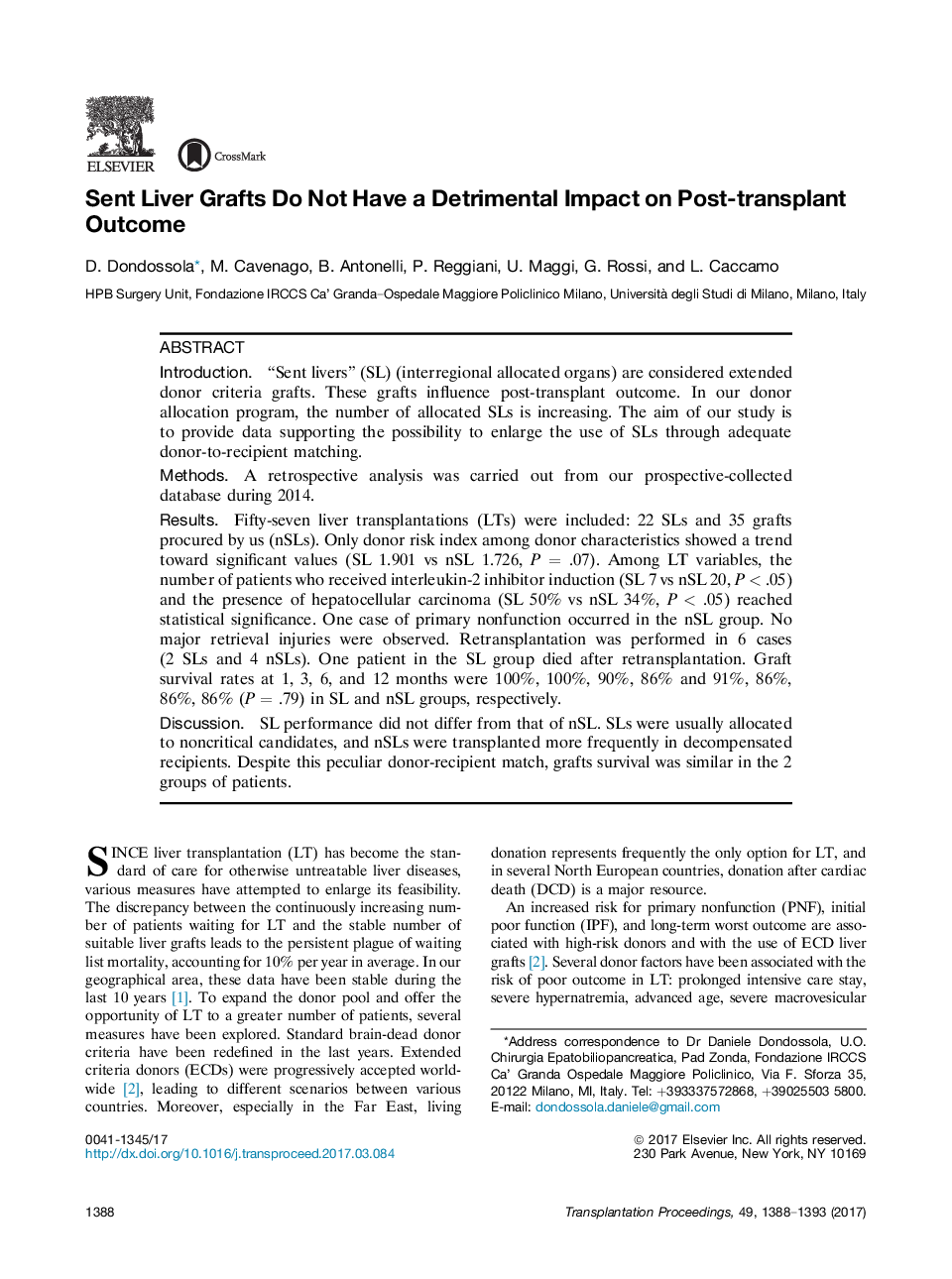| Article ID | Journal | Published Year | Pages | File Type |
|---|---|---|---|---|
| 5728699 | Transplantation Proceedings | 2017 | 6 Pages |
â¢Sent livers (SLs) are weighted by a detrimental impact on graft survival.â¢Increased TIT and procurement damage are the main involved mechanisms.â¢Comparing SL and non-SL, a wise organization could avoid increased TIT.â¢No differences in graft survival and procurement damage were highlighted.â¢Let livers travel, not surgeons.
Introduction“Sent livers” (SL) (interregional allocated organs) are considered extended donor criteria grafts. These grafts influence post-transplant outcome. In our donor allocation program, the number of allocated SLs is increasing. The aim of our study is to provide data supporting the possibility to enlarge the use of SLs through adequate donor-to-recipient matching.MethodsA retrospective analysis was carried out from our prospective-collected database during 2014.ResultsFifty-seven liver transplantations (LTs) were included: 22 SLs and 35 grafts procured by us (nSLs). Only donor risk index among donor characteristics showed a trend toward significant values (SL 1.901 vs nSL 1.726, P = .07). Among LT variables, the number of patients who received interleukin-2 inhibitor induction (SL 7 vs nSL 20, P < .05) and the presence of hepatocellular carcinoma (SL 50% vs nSL 34%, P < .05) reached statistical significance. One case of primary nonfunction occurred in the nSL group. No major retrieval injuries were observed. Retransplantation was performed in 6 cases (2 SLs and 4 nSLs). One patient in the SL group died after retransplantation. Graft survival rates at 1, 3, 6, and 12 months were 100%, 100%, 90%, 86% and 91%, 86%, 86%, 86% (P = .79) in SL and nSL groups, respectively.DiscussionSL performance did not differ from that of nSL. SLs were usually allocated to noncritical candidates, and nSLs were transplanted more frequently in decompensated recipients. Despite this peculiar donor-recipient match, grafts survival was similar in the 2 groups of patients.
